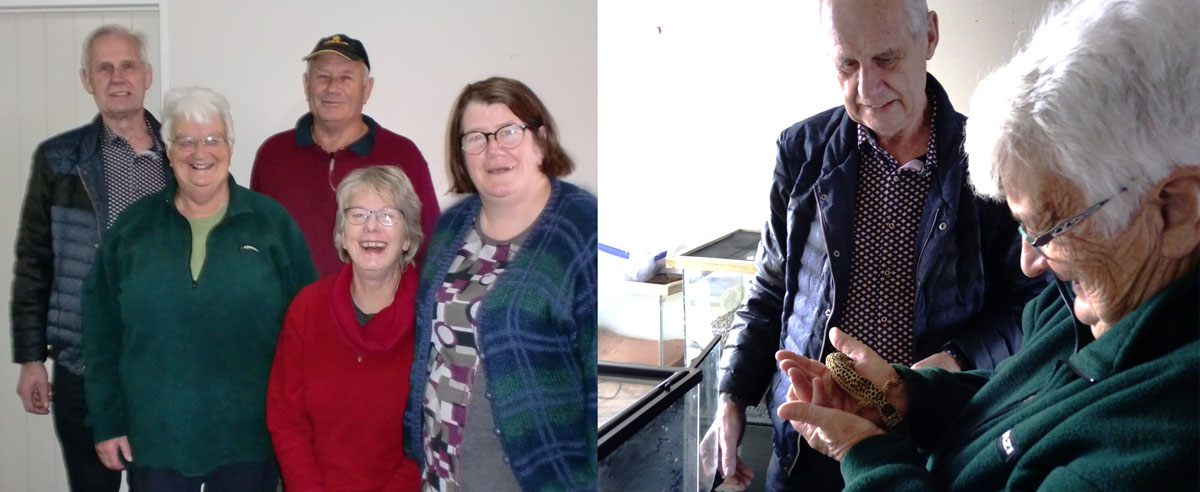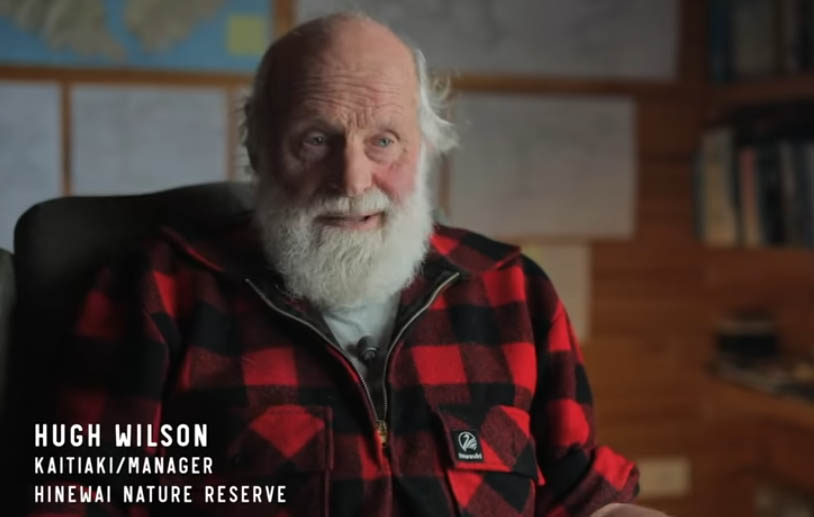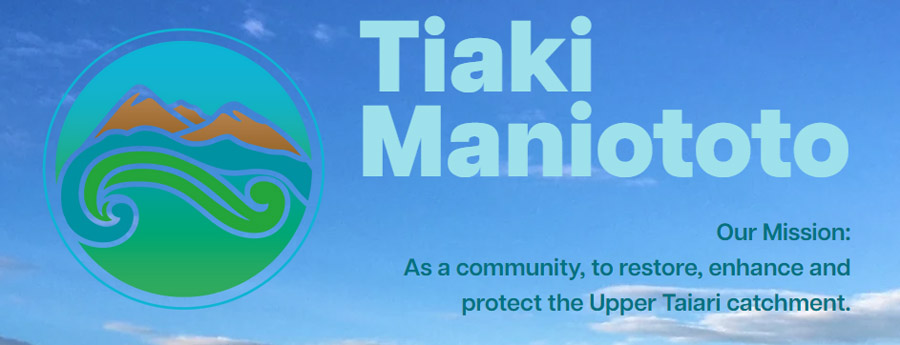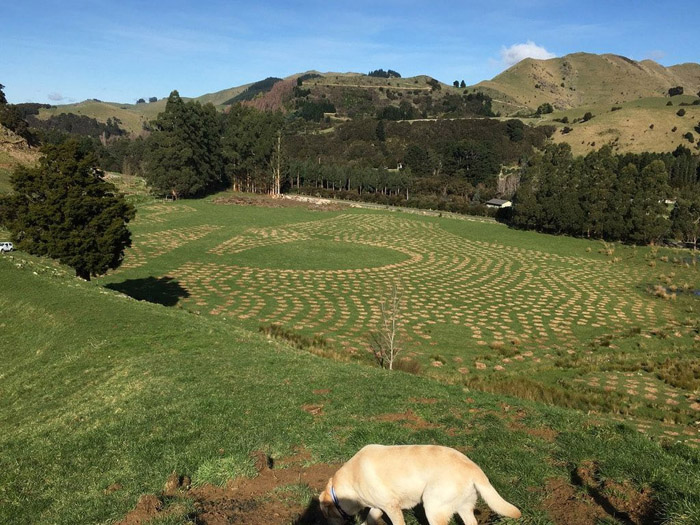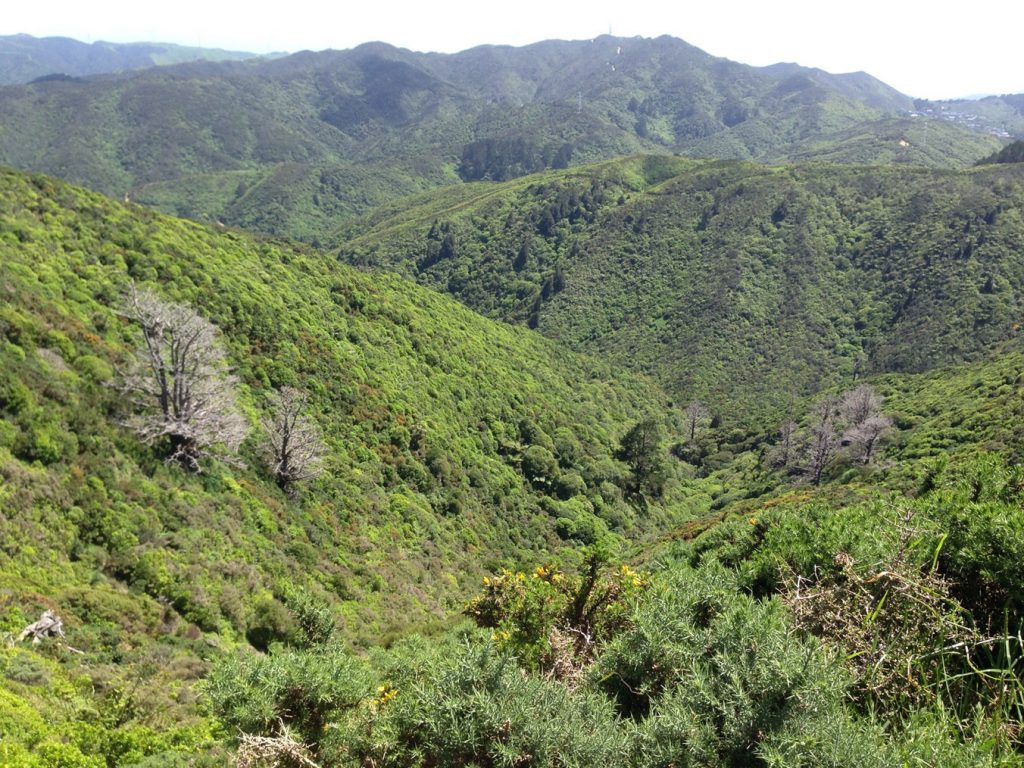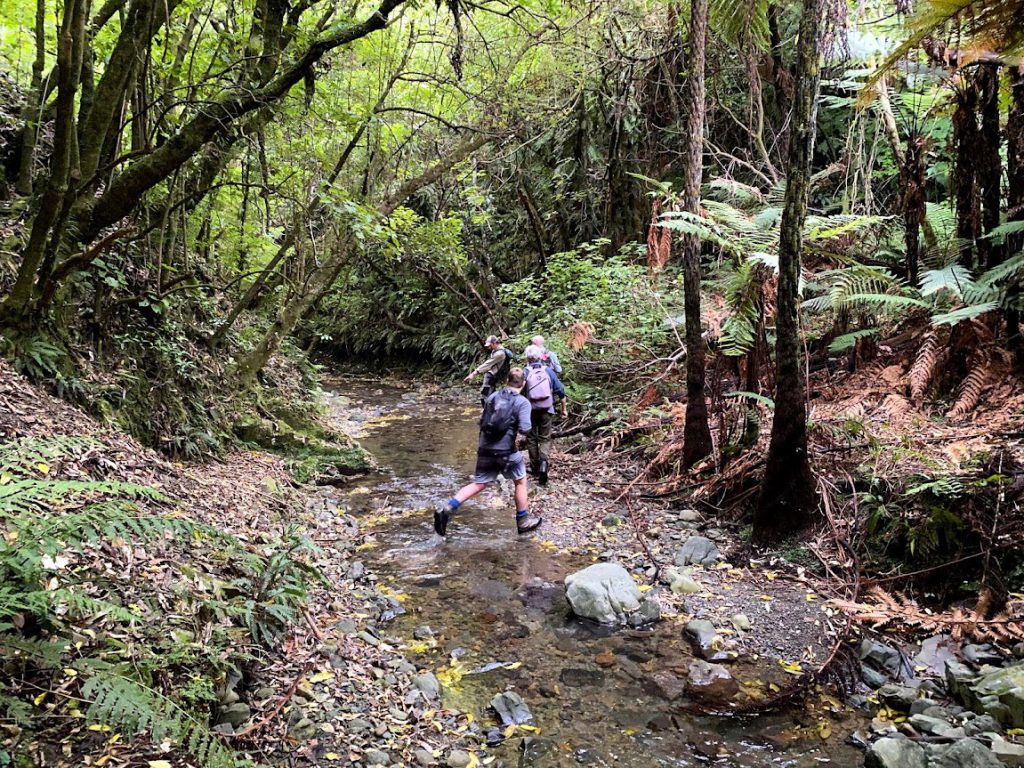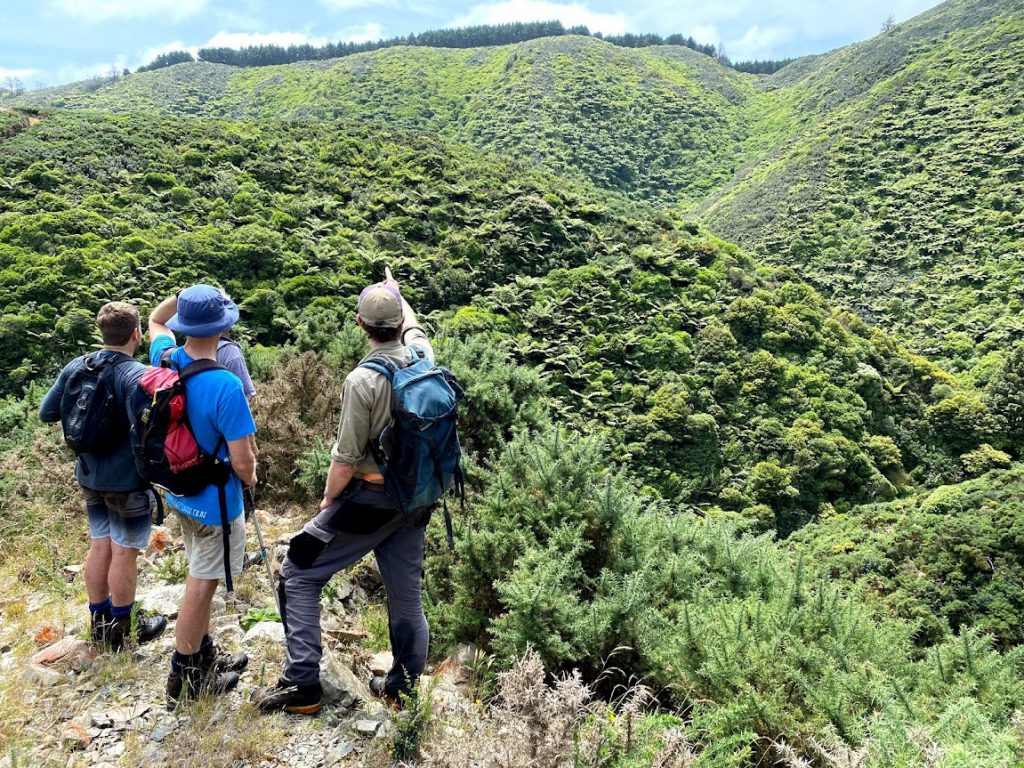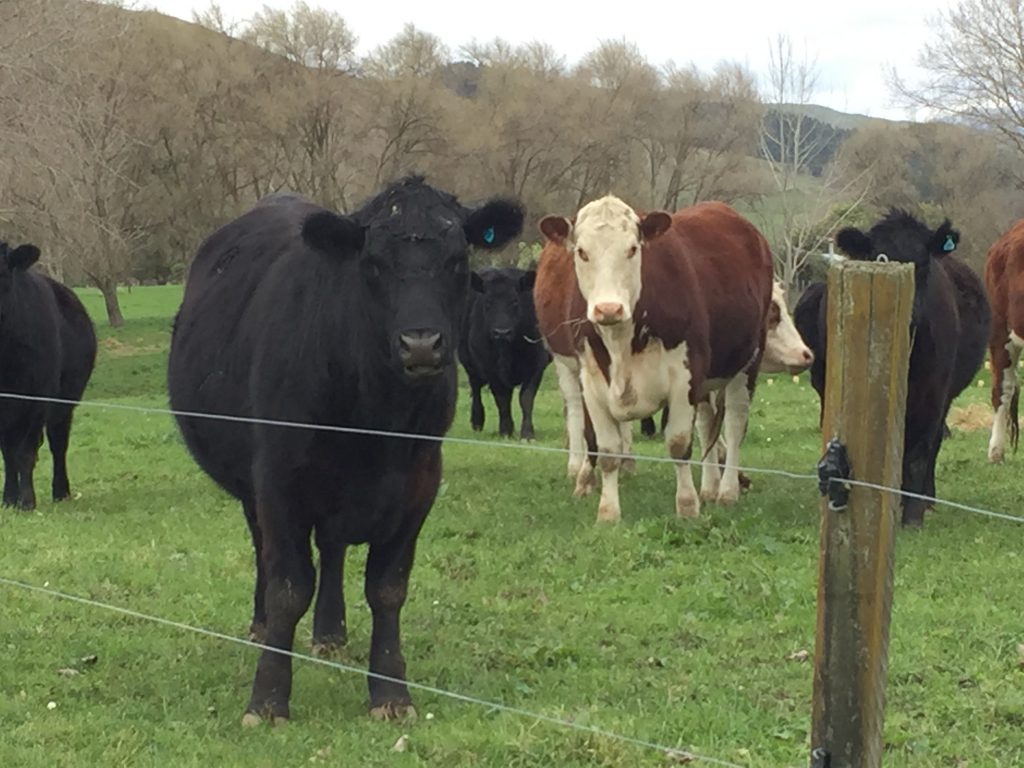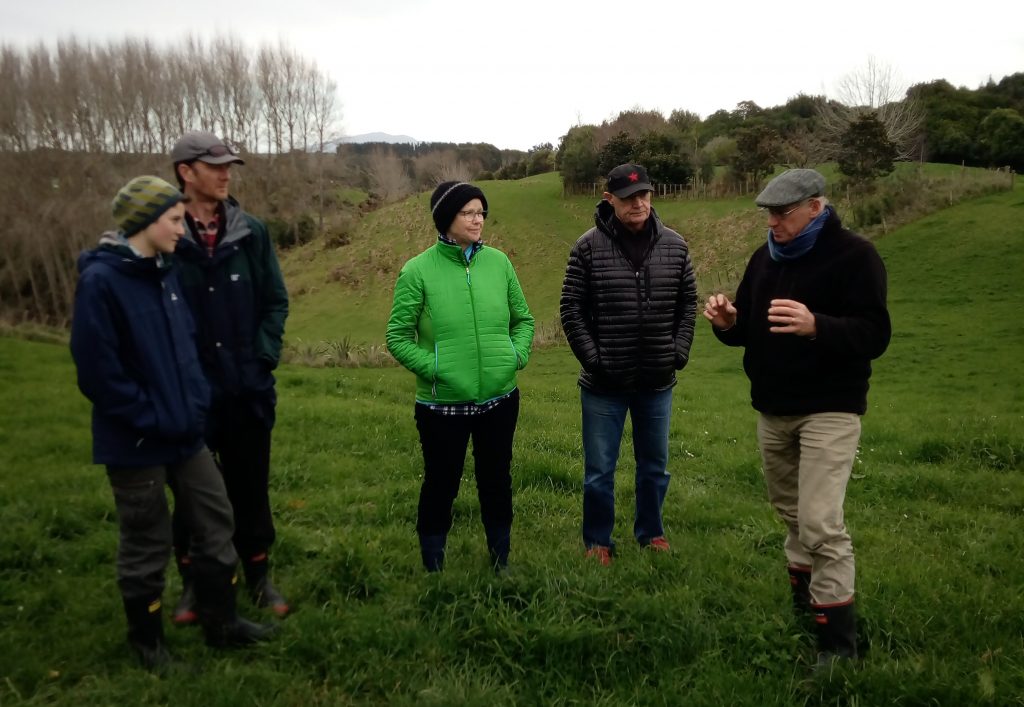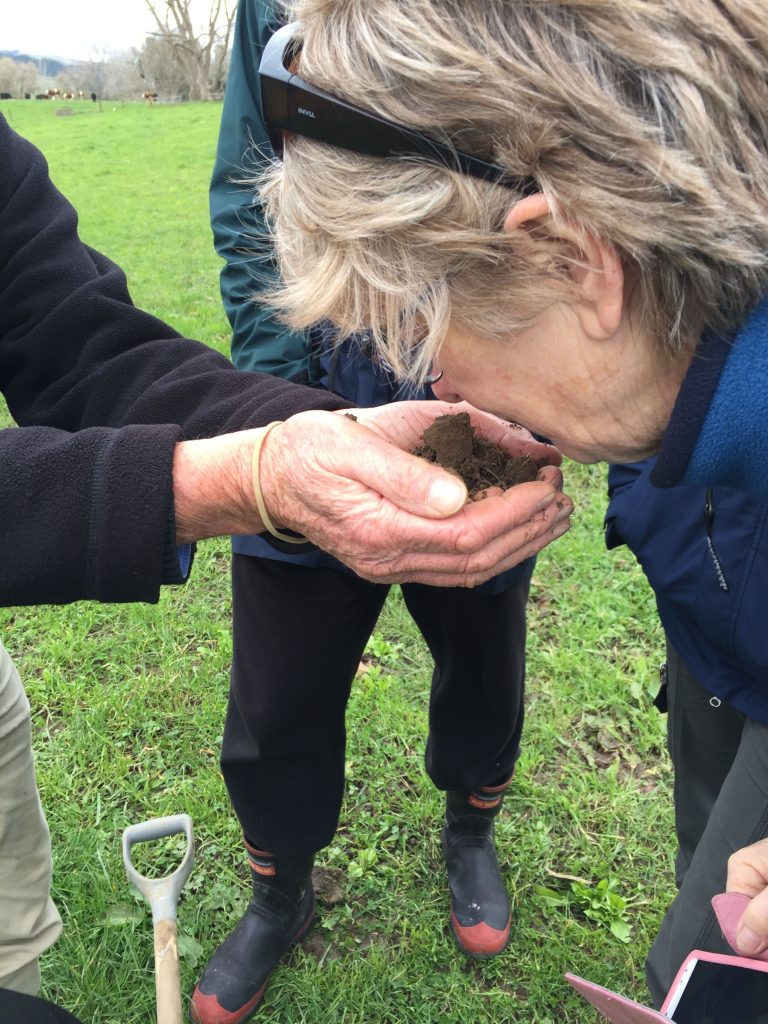A visit to Wildlife Foxton Trust. Dr Joy Anderton and Di Buchan with Nola Fox, John [Huck] Baird and John Girling of WFT and trust member Dr Joy Anderton admiring one of the residents at the Wildlife Foxton Trust headquarters while Foxton Trust chairman John Girling, looks on.
Hinewai Land Restoration Project
Freshwater Champions
People who've dedicated themselves to improving and protecting our water quality and environment were celebrated at the Freshwater Champions Aotearoa awards ceremony at Te Papa in Wellington.
Cawthron Institute has run the awards for over a decade, previously known as the the National River Awards. This year there were more than 50 nominations from across New Zealand in consideration for the accolades. The judges had to choose five winners. One of those is the Burke Family who run Pukekauri Farms at Katikati in the Bay of Plenty.
Over more than two decades they've taken what was considered the most environmentally degraded farm in the Western Bay of Plenty, and turned it around. Assessors described them as "genuine trailblazers". John Burke from the Burke family speaks to Jesse. LINK to RNZ
Check out Tiaki Maniototo whose mission is:
As a community, to restore, enhance and protect the Upper Taiari catchment.
REWILDING BLOCK 252
Chris & Kate are experimenting with rural land-use that works with nature and helps the climate. Four weeks after spot-spraying they collected kanuka seedlings from the nursery and planted one on each planting spot. A week after planting they were already showing signs of new growth. In July they planted the first podocarps: 50 kahikatea scattered about in small clumps in some sheltered wet areas. "We’ll eventually plant hundreds more, along with other canopy and emergent species, once our sheltering kanuka is properly established." Visit their website rewilding-block252
https://rewilding-block252.weebly.com/
Long Gully Bush, Wellington’s Hinewai
November 2021
Long Gully Bush (LGB) is a privately-owned nature reserve near Wellington City centre. It comprises 107 hectares of regenerating native forest with pockets of original remnant forest and adjoins the Zealandia wildlife sanctuary.
The bulk of the land is owned by the Wellington Natural Heritage Trust, with contributions from several neighbours adding to the managed area. The land owned by the Trust and some parts owned by neighbours are protected by QEII covenants. The whole area is managed by the Trust under a management plan completed in 2015. Most work is done by a contractor, paid for through fundraising.
In the past the land was used for farming, including goat farming. In recent decades, farming has largely been abandoned across the wider area and a pattern of reversion through scrub to native forest has dominated. Feral goats and possums have remained numerous however, severely hampering the recovery of native bush.
The LGB project began in 1999. A group of prominent Wellington conservationists formed the Trust and bought the original 50 hectares at the core of the block. The project was launched on-site by Sir David Bellamy.
The Trust’s policy is to leave regeneration up to natural processes as far as possible. Management consists of controlling pest animals and pest plants. No planting is done. The Trust hopes that demonstrating the benefits of this low-input, low-cost approach will encourage other landowners to do the same on their own properties.
Between 2006 and 2008 a fence was built to exclude goats, pigs and fallow deer. Possums and predators are intensively controlled using bait stations and traps. Threatened species from Zealandia have now colonised the bush, including tieke, North Island robin, kākāriki, whitehead, kākā, hihi, bellbird and rifleman.
The Trust says that sustaining weed and pest animal control is critical to success. This requires dedication and commitment, tolerance and patience. Indications are that the Trust’s simple approach is achieving the desired outcomes:
-
With the exclusion of goats, long-persisting gorse scrub is giving way rapidly to native forest
-
Without browsing and trampling hooves, steep slopes are stabilising and soil is accumulating
-
Improved vegetation and soil retention have resulted in healthy streams
-
Reducing rodents and possums has allowed the seedlings of a wide range of native plants to establish
-
Many threatened birds from Zealandia have found the block a safe haven thanks to intensive predator-control.
Learn more at https://www.wnht.org.nz/
https://www.facebook.com/Wellington-Natural-Heritage-Trust-105236498667568
Low-Input Farming near Manakau
Recently some of the DBE Trustees visited the farm of Stuart Prichard who has become a fervent advocate for the economic and environmental benefits of using less fertiliser and chemicals on his farm and adopting organic farming principles. It was a real pleasure walking over his 15 hectare property with its 35 heifers happily munching on the pasture that is full of clover, rygrass, dock, plantain and buttercup. He rotates grazing on a 48-day cycle in winter reducing to 20 days in the spring flush. No pugging here – even in the depths of winter and the soil was full of worms and smelled sweet.
Every paddock has a few large trees which not only enhance the attractiveness of the farm but more importantly, provides the cattle with shelter from bad weather and shade on hot days. Logical but sadly not a practice adopted on all farms.
Stuart’s property also has a large wetland which is currently being enhanced and a four-hectare block of native trees to help mitigate greenhouse gas emissions. The block of trees also provides food and shelter for a bee-breeding enterprise and the production of organic honey. Minimising the use of fertiliser contributes to the reduction of carbon emissions and nitrogen pollution in our waterways.
Thank you Stuart for the opportunity to meet you and your beautiful cattle and to be inspired by your land-management practices!

